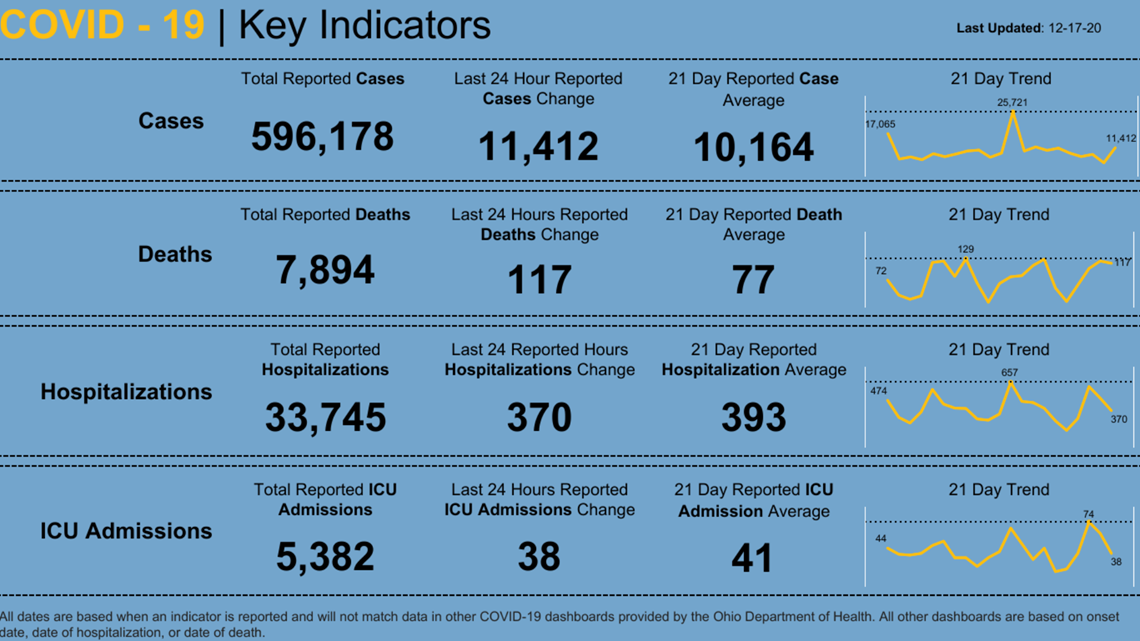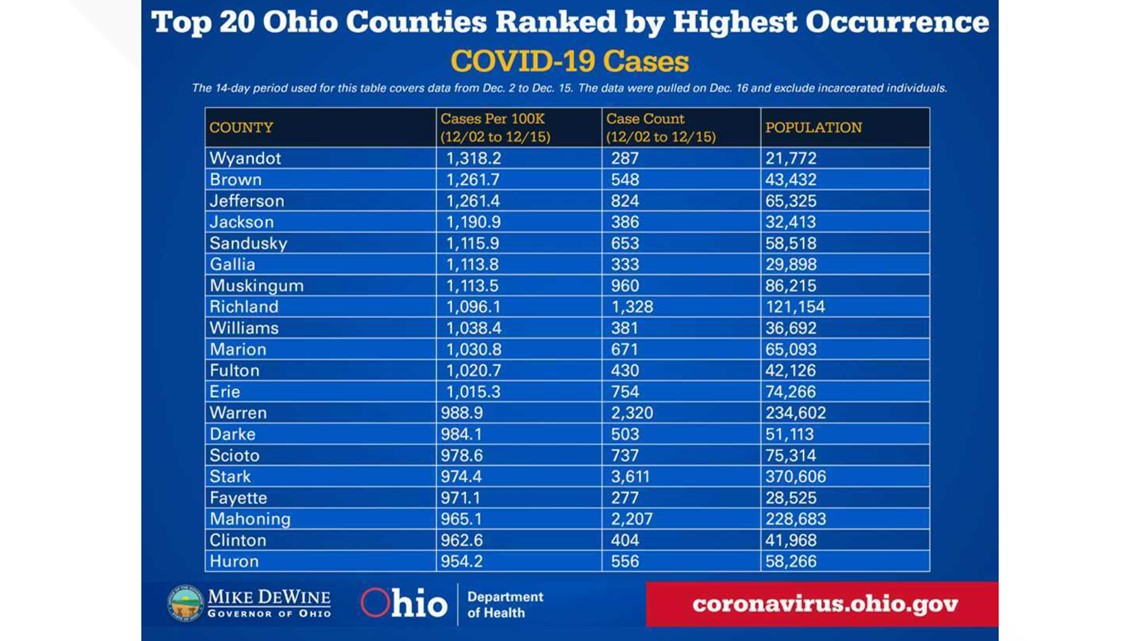COLUMBUS, Ohio — Though the state is closing in on its first week of COVID-19 vaccine distribution, health leaders are encouraging Ohioans to keep their guards up, as concern continues to grow over the state's ICUs.
Ohio Department of Health (ODH) Chief Medical Officer Dr. Bruce Vanderhoff said it's dangerous for a hospital's ICU to be 80% full. In addition to being very full, when 20% of an ICU's beds are taken up by people with the same diagnosis, like COVID-19, they begin to crowd out other patients who may need to get into that busy ICU
"In every region of our state, there is so much COVID and the ICUs are so full that we have just this problem," Vanderhoff said. "Not only are our ICUs very busy, they're very busy with critical volumes of COVID-19. That's a signal to all of us that we can't let this thing get any worse."
However, DeWine acknowledged that the "Thanksgiving bump" health experts were anticipating was smaller than projected. The governor credited the state's curfew and increased mask compliance with slowing the spread. While the numbers seem to be flattening a bit, DeWine said it is too soon to tell if we are truly in a plateau, saying regardless, cases are too high.
"That's good, but that's not good enough," DeWine said.
KEY METRICS


PUBLIC HEALTH ADVISORY MAP
Only one county, Richland, remained at Level 4 (Purple) in the state Thursday. However, nearly every county in the state is at Level 3 (Red). Locally, Wyandot County elevated to Level 3 (Red) for the very first time.
DeWine said when every county is at that level, the system takes on less meaning.
Instead, he encouraged Ohioans to look at their hospitals, if hospitals are struggling, there are too many COVID-19 patients coming in, he claimed.
He also urged people to pay attention to the list of high incidence counties. Currently, all Ohio counties remain at least three times the CDC threshold of 100 cases per 100,000 people.
CASES PER 100,000 PEOPLE
Wyandot County topped the governor's list Thursday, ranking each county in order of those with the most COVID-19 cases per 100,000 people to the list.
The county reported 1,318.2 cases per 100,000 people over the last two weeks - more than 13 times the CDC threshold.
Five other northwest Ohio counties were in the Top 20:
- Sandusky, with 1,115.9 cases per 100,000 people
- Williams, with 1,038.4 cases per 100,000 people
- Fulton, with 1,020.7 cases per 100,000 people
- Erie, with 1,015.3 cases per 100,000 people
- Huron, with 954.2 cases per 100,000 people


VACCINE
DeWine said that next week, many more hospitals in the state are likely to get the vaccine as the first doses of Moderna's vaccine are expected to ship out once it gains FDA approval.
On Friday, DeWine said, the state will see vaccination in its nursing homes.
Facilities in Ohio will be among the first in the nation to receive vaccines through Walgreen’s, CVS, PharmScript and Absolute Pharmacy.
DeWine is expected to be in Sandusky on Friday at the Veteran's Home for the vaccination process. However, an exact time has not yet been announced.
While the vaccine won't be available for the general public for quite some time, Vanderhoff explained that if you are a person who has had a anaphylactic reaction - or a very severe reaction - to a vaccine in your life, you may want hold off for a bit. However, he claimed that the current vaccine had a "remarkable" safety profile in late trials.
SCHOOLS
DeWine noted that the state is beginning to see even more schools that were open five days a week start to pull back because high levels of COVID-19 spread within the community.
Many have found it difficult to maintain staffing as teachers, bus drivers etc. fall sick or are stuck in quarantine.
For the majority of the pandemic, the state has left it up to the schools to decide what the best options are for their students and families.
DeWine said Thursday that of kids currently in public schools:
- 27.9% are in-person
- 45.2% are fully remote
- 26.1% are hybrid
- 1 district is closed
The governor said more information regarding schools is on the horizon.
MENTAL HEALTH AND SUBSTANCE ABUSE
As demand for mental health and substance use disorder treatment increases, DeWine announced that a number of grants totaling over $76 million have been awarded to local alcohol, drug and mental health boards, as well as prevention, treatment, recovery support providers across the state.
The governor thanked senators Rob Portman and Sherrod Brown for their efforts in getting the funding.

